
The Latter Day Saint movement is a religious movement within Christianity that arose during the Second Great Awakening in the early 19th century and that led to the set of doctrines, practices, and cultures called Mormonism, and to the existence of numerous Latter Day Saint churches. Its history is characterized by intense controversy and persecution in reaction to some of the movement's doctrines and practices and their relationship to mainstream Christianity. The purpose of this article is to give an overview of the different groups, beliefs, and denominations that began with the influence of Joseph Smith.

The Mormon Trail is the 1,300-mile (2,100 km) long route from Illinois to Utah that members of The Church of Jesus Christ of Latter-day Saints traveled for 3 months. Today, the Mormon Trail is a part of the United States National Trails System, known as the Mormon Pioneer National Historic Trail.
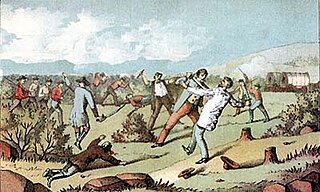
The 1838 Mormon War, also known as the Missouri Mormon War, was a conflict between Mormons and non-Mormons in Missouri from August to November 1838, the first of the three "Mormon Wars".

Lyman Wight was an early leader in the Latter Day Saint movement. He was the leader of the Latter Day Saints in Daviess County, Missouri, in 1838. In 1841, he was ordained a member of the Quorum of the Twelve Apostles. After the death of Joseph Smith resulted in a succession crisis, Wight led his own break-off group of Latter Day Saints to Texas, where they created a settlement. While in Texas, Wight broke with the main body of the group led by Brigham Young. Wight was ordained president of his own church, but he later sided with the claims of William Smith, and eventually of Joseph Smith III. After his death, most of the "Wightites" joined with the Reorganized Church of Jesus Christ of Latter Day Saints.

Voree (/vɔːriː/) is an unincorporated community in the Town of Spring Prairie in Walworth County, Wisconsin, United States. It is best known as the headquarters of the Church of Jesus Christ of Latter Day Saints (Strangite), a denomination of the Latter Day Saint (Mormon) movement. According to James Strang, founder of the Strangite church and of the town, the name means "Garden of Peace". The community is situated along former Wisconsin Highway 11 just west of the Racine County line.
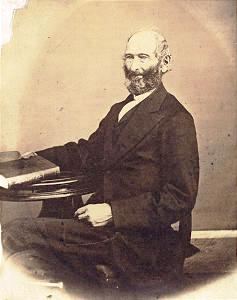
John Whitmer was an early leader in the Latter Day Saint movement. He was one of the Eight Witnesses of the Book of Mormon's golden plates. Whitmer was also the first official Church Historian and a member of the presidency of the church in Missouri from 1834 to 1838.
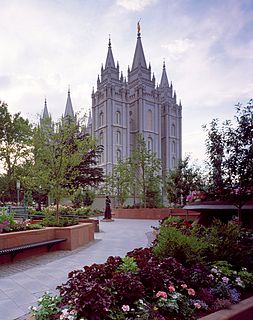
In the Latter Day Saint movement, a temple is a building dedicated to be a house of God and is reserved for special forms of worship. A temple differs from a church meetinghouse, which is used for weekly worship services. Temples have been a significant part of the Latter Day Saint movement since early in its inception. Today, temples are operated by several Latter Day Saint denominations. The most prolific builder of temples of the Latter Day Saint movement is The Church of Jesus Christ of Latter-day Saints. There are 170 dedicated temples, 45 under construction, and 50 announced, for a total of 265. Several others within the movement have built, or attempted to build, temples. The Community of Christ operates two temples in the United States, which are open to the public and are used for worship services, performances, and religious education. Other denominations with temples are the Apostolic United Brethren, the Church of Christ, the Fundamentalist Church of Jesus Christ of Latter-Day Saints and the Righteous Branch of the Church of Jesus Christ of Latter-day Saints.
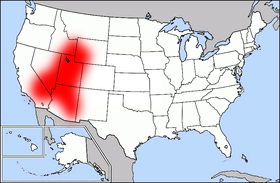
The Mormon corridor refers to the areas of western North America that were settled between 1850 and approximately 1890 by members of The Church of Jesus Christ of Latter-day Saints, who are commonly called "Mormons".

Benjamin Franklin Johnson was an early member of Latter Day Saint Movement, and a member of the Council of Fifty and a formerly private secretary to Joseph Smith. He served fourteen terms in the Utah State Legislature and was also a brickmaker, merchant, tavern keeper, leatherworker, farmer, nurseryman, and beekeeper.

Thomas Edwin Ricks was a prominent Mormon pioneer, a community leader, and a settler of the western United States.
George Miller was a prominent convert in the Latter Day Saint movement and was the third ordained bishop in the Latter Day Saint church.
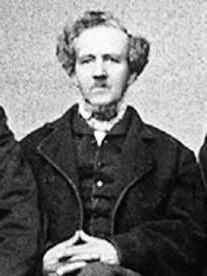
Phineas Howe Young was a prominent early convert in the Latter Day Saint movement and was later a Mormon pioneer and a missionary for The Church of Jesus Christ of Latter-day Saints. Phineas Young was an older brother of Brigham Young, who was the president of the LDS Church and the first governor of the Territory of Utah.

Nauvoo Historic District is a National Historic Landmark District containing the city of Nauvoo, Illinois. The historic district is nearly coterminous with the City of Nauvoo as it was incorporated in 1840, but it also includes the Pioneer Saints Cemetery, the oldest Mormon cemetery in the area, which is outside the town boundary.

Joel Hills Johnson was a Latter Day Saint missionary and hymn writer, known for being the author of "High on the Mountain Top". Johnson was also the founder of Enoch, Utah.
The history of Nauvoo, Illinois, starts with the Sauk and Fox tribes who frequented the area. They called the area "Quashquema", named in honor of the Native American chief who headed a Sauk and Fox settlement numbering nearly 500 lodges. Permanent settlement by non-natives was reportedly begun in 1824 by Captain James White. By 1827 other white settlers had built cabins in the area. By 1829 this area of Hancock County had grown sufficiently so that a post office was needed, and in 1832 the town, now called "Venus", was one of the contenders for the new county seat. However, the nearby city of Carthage was selected instead. In 1834 the name Venus was changed to "Commerce" because the settlers felt that the new name better suited their plans. In late 1839, arriving Mormons bought the small town of Commerce, and in April 1840 it was renamed "Nauvoo" by Joseph Smith, the latter day prophet of the Latter Day Saint movement. Nauvoo grew rapidly and for a few years was one of the most populous cities in Illinois. Within two years of Joseph Smith's death by a mob in 1844, most of the population had departed, fleeing armed violence. Most headed west with the group led by Brigham Young.
Daniel Sanborn Miles was an early Mormon leader and member of the Presidency of the Seventy of the Church of Jesus Christ of Latter Day Saints.

The Church of Jesus Christ of Latter-day Saints in Arizona refers to The Church of Jesus Christ of Latter-day Saints and its members in Arizona. In 2019, the church reported 436,521 members in Arizona which is about 6% of the state's population. According to the 2014 Pew Forum on Religion & Public Life survey, roughly 5% of Arizonans self-identify themselves most closely with The Church of Jesus Christ of Latter-day Saints. The LDS Church is the 2nd largest denomination in Arizona, behind the Roman Catholic Church.

The Church of Jesus Christ of Latter-day Saints has had a presence in India since the 19th century. As of 2019, there were local members, missionaries and multiple meetinghouses of the LDS Church in the country.
Charles Shumway (1806–1898) was an early member of The Church of Jesus Christ of Latter-day Saints who served as a member of the council of 50 and was part of the Utah Legislature for one term in 1851.
















